
Overview
This article delves into the essential UX optimization techniques that are pivotal for the success of Direct-to-Consumer (DTC) brands. It asserts that the implementation of strategies such as:
- User session recordings
- Competitor analysis
- Conversion copywriting
can substantially enhance user experience and drive profitability. Case studies substantiate this claim, demonstrating significant increases in sales and customer engagement when these techniques are effectively utilized. By adopting these practices, DTC brands can not only improve their user experience but also achieve remarkable financial outcomes.
Introduction
In an increasingly competitive digital landscape, direct-to-consumer (DTC) brands confront the urgent challenge of capturing and retaining customer attention. Effective user experience (UX) optimization has emerged as a pivotal strategy for enhancing profitability and ensuring long-term success in this domain. By exploring ten essential techniques, brands can unlock the potential for increased conversion rates and customer loyalty.
How can DTC companies implement these strategies to not only meet but exceed user expectations, transforming casual visitors into devoted customers?
Parah Group: Comprehensive UX Optimization Services for DTC Brands
stands as a leader in offering a comprehensive suite of services focused on specifically tailored for . Their offerings encompass:
- User session recordings
- Persuasive copywriting
- UI/UX design
- Customer surveys
By leveraging these services, brands can significantly enhance their profitability and revenue without incurring additional advertising costs, establishing Parah Group as an indispensable partner in today’s competitive landscape. Their holistic strategy ensures that every component of a client's website is , leading to measurable improvements in ROI and .
Industry leaders assert that transcends mere aesthetics; it has a direct impact on profitability and customer loyalty. Don Norman articulates this well, stating, "If you want to create a great product, you have to start by understanding the people who will use it," underscoring the necessity of .
Businesses that prioritize UX enhancement can achieve , which underscores the critical role of user experience in driving sales growth. As DTC companies navigate the complexities of the market, it is imperative to adopt effective UX optimization strategies, supported by continuous research and testing, to ensure sustained success.
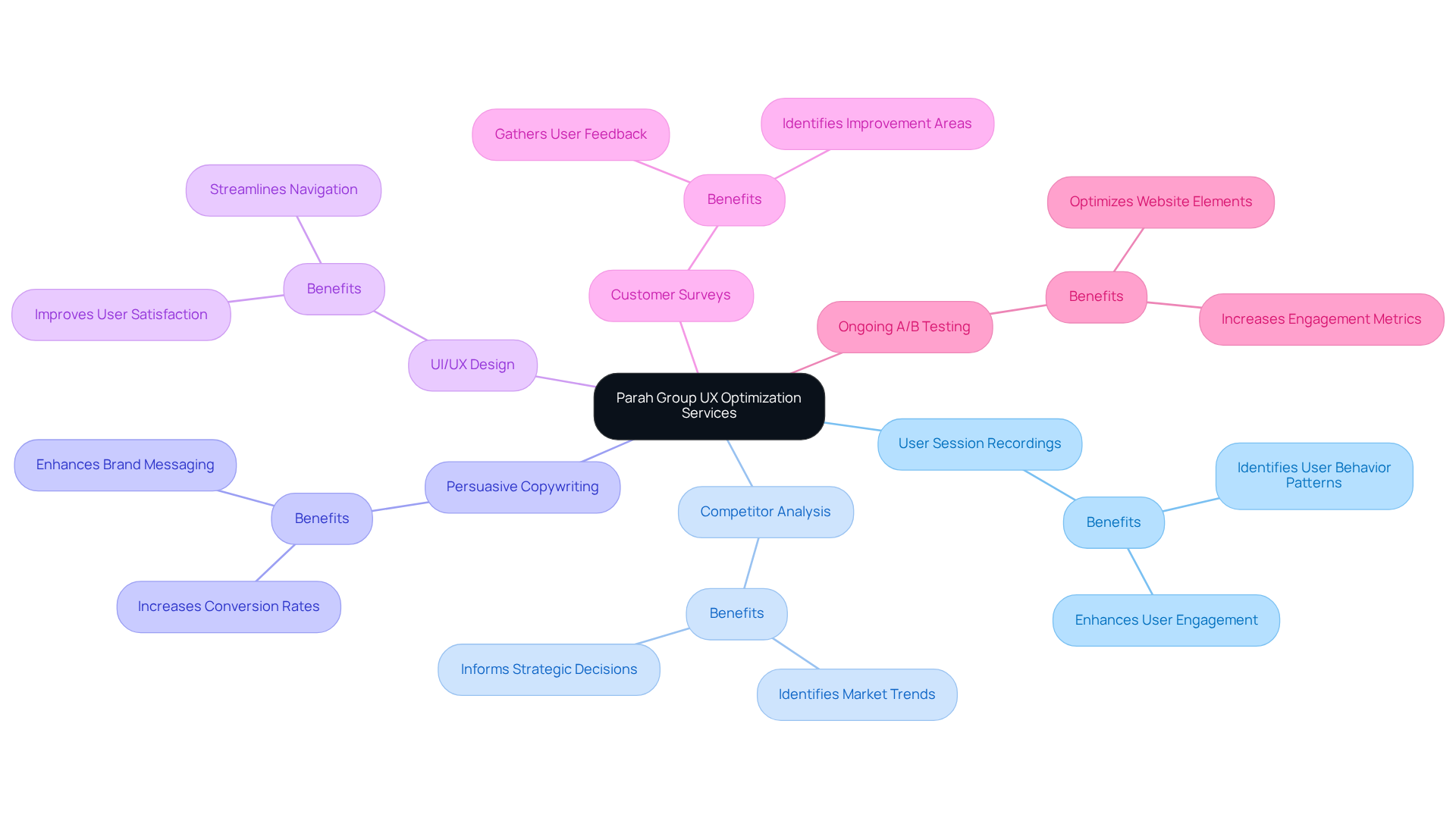
User Session Recordings: Capture Real-Time User Interactions
Client empower companies to monitor real-time interactions on their websites, delivering . By thoroughly analyzing these recordings, brands can identify specific areas where individuals face challenges, lose interest, or abandon their carts. This data is essential for regarding , ensuring that the website aligns with the expectations and behaviors of visitors.
Adjustments made based on these insights can lead to significant increases in —firms with robust experience —and can greatly . As highlighted by UX researchers, is vital for pinpointing friction points and effectively implementing to enhance the user experience.

Competitor Analysis: Benchmark Against Industry Leaders
Conducting a thorough empowers DTC companies to effectively benchmark their against that of industry leaders. By examining competitors' strengths and weaknesses, companies can uncover valuable opportunities for enhancement and innovation. This analysis emphasizes , revealing user engagement techniques that can be adapted to elevate their own websites.
For instance, a $30M clothing label that collaborated with saw a remarkable 35% rise in sales rates after refining product pricing and gamifying the shopping experience. Similarly, Grab Green, a $15M cleaning product company, boosted their average order value (AOV) by 80% through targeted adjustments such as implementing free shipping thresholds and product bundling.
Research indicates that effective UI can enhance results by up to 200%, while . These improvements can be achieved by adopting best practices in UX optimization that have been observed in successful competitors. Furthermore, industry experts highlight that benchmarking provides a quantitative dimension to qualitative research, reinforcing findings and motivating design changes.
By leveraging these insights, their , leading to . To execute competitor analysis efficiently, DTC brands should consistently , observing design features and engagement strategies that resonate with their audience.
In today's competitive landscape, where 88% of individuals are less likely to return to a site after encountering poor UX optimization, the importance of .
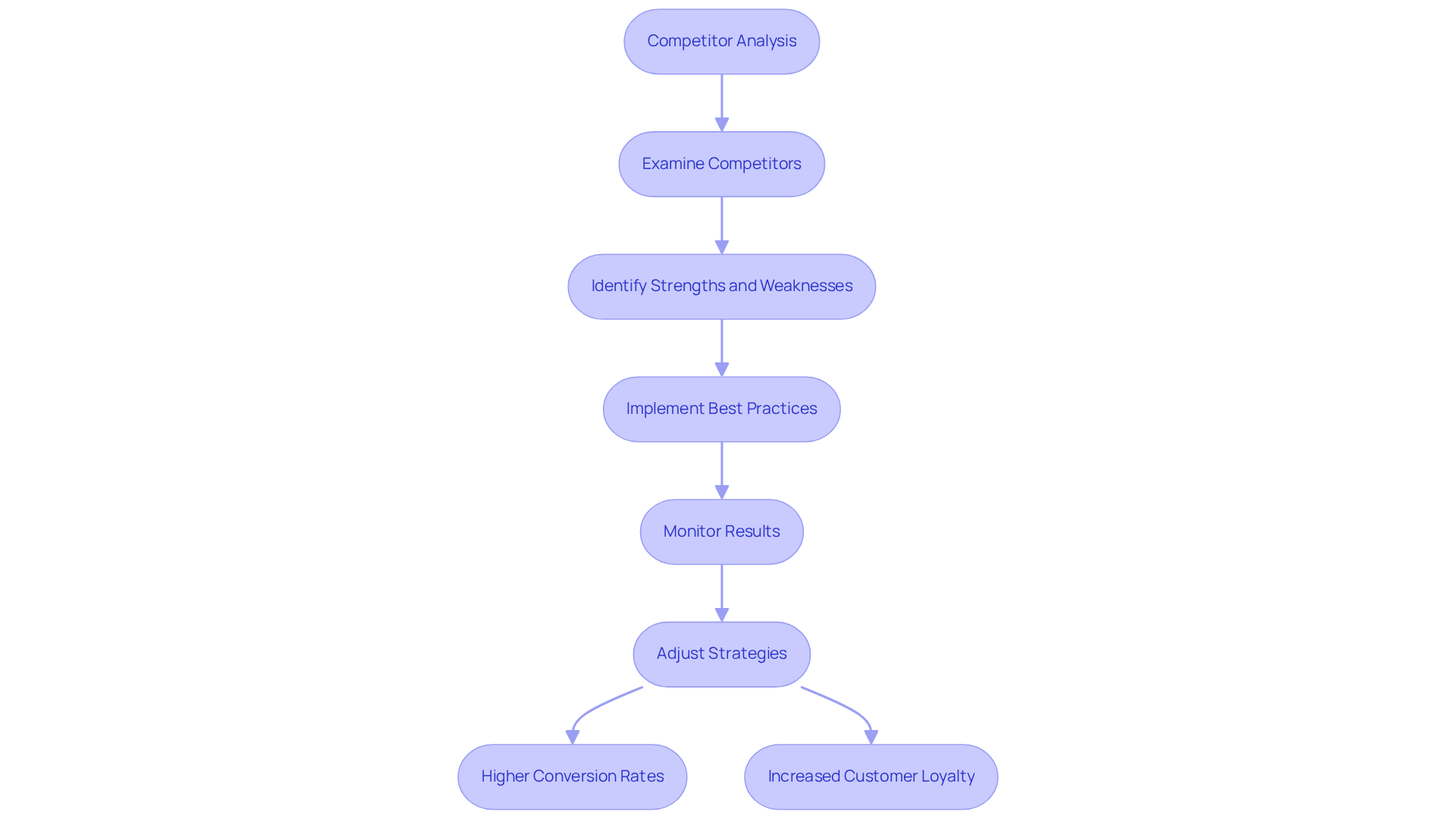
Conversion Copywriting: Craft Compelling Messages to Drive Action
is essential for crafting messages that resonate deeply with individuals, compelling them to take decisive action. By harnessing —such as urgency, social proof, and emotional appeal—brands can effectively customize their messaging to align with individual motivations. This strategic approach not only enhances user engagement but also significantly boosts success rates, making it a critical element of any .
For instance, a well-executed email campaign can yield remarkable results; one client achieved $7,485 in sales from just 221 subscribers within two hours, demonstrating the potency of . Moreover, Anna's strategies have consistently resulted in transactions valued at 8 figures, underscoring the efficacy of persuasive copywriting.
Insights from copywriting experts emphasize that effective messaging can lead to , with certain strategies resulting in lifts of up to 30%. As Jennifer Dean aptly notes, "The issue with most D2C companies is that they think marketing is advertising," which underscores the necessity for a deeper understanding of consumer engagement.
Additionally, the case study titled 'The Importance of Strong Messaging for ' illustrates how can empower DTC companies to forge and drive significant shifts in purchasing behavior. As DTC companies navigate a competitive landscape, grasping and implementing these psychological principles in their messaging can enhance interactions and facilitate substantial growth.
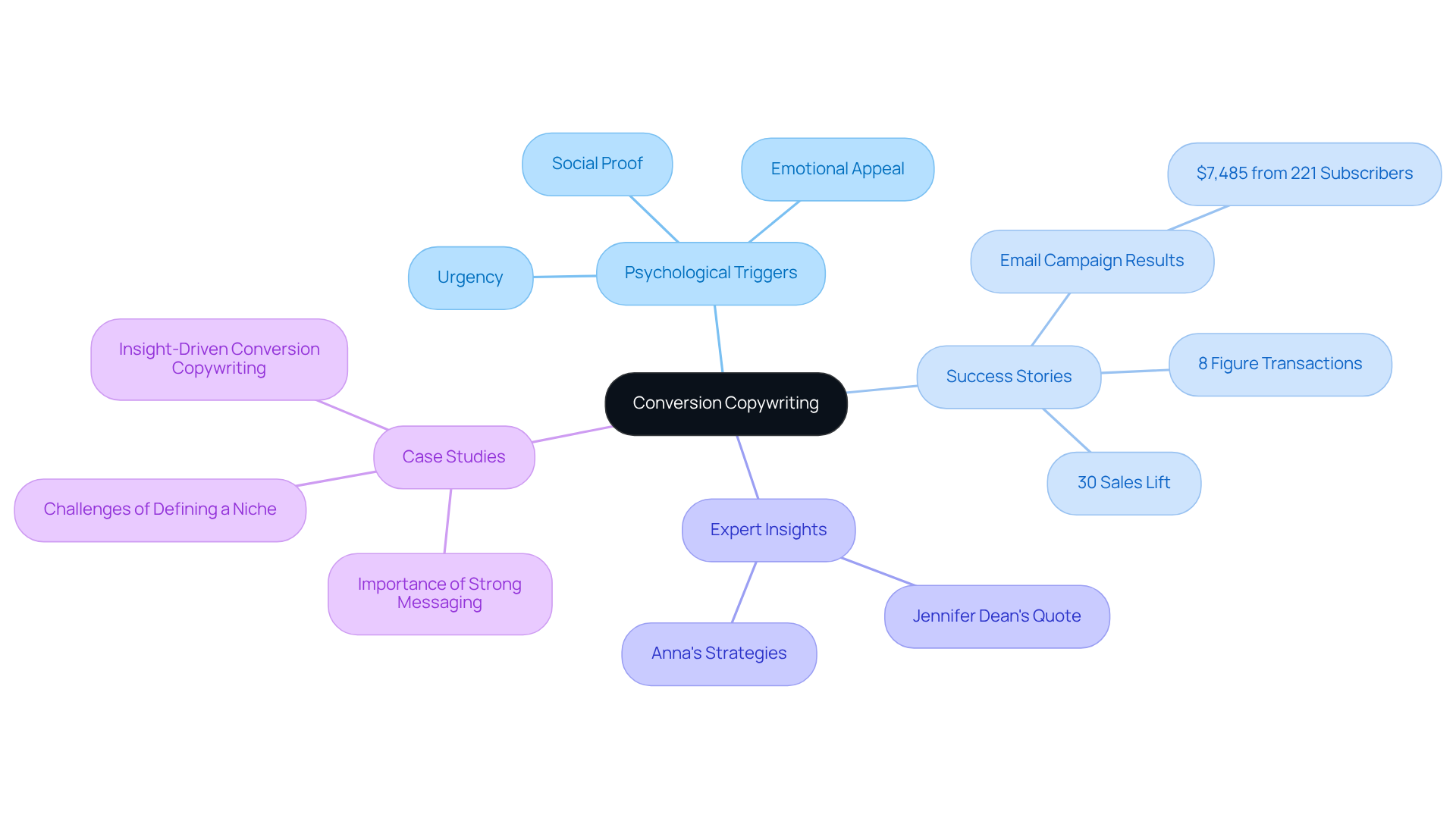
UI/UX Design: Create Intuitive Interfaces for Enhanced Engagement
is paramount in crafting intuitive interfaces that significantly contribute to and . By prioritizing usability and visual appeal, brands can achieve to ensure that individuals enjoy a on their websites. Effective design that incorporates ux optimization minimizes confusion and frustration, leading to increased satisfaction and a higher likelihood of success.
Recent statistics reveal that:
- 52% of U.S. consumers abandon purchases due to unsatisfactory interactions, underscoring the critical need for .
- A thoughtfully executed design can yield an impressive 400% increase in conversion rates, as highlighted by Forrester Research.
- 42% of usability testing participants reported difficulty in assessing product size due to the absence of 'In Scale' images, emphasizing the necessity for clear product representation.
- PriceWaterhouseCoopers (PWC) found that 32% of clients would forsake a beloved company after just one negative experience, illustrating the fragility of customer loyalty.
By leveraging these insights, can use ux optimization to enhance their websites, ensuring they meet visitor expectations and stand out in a competitive landscape. To further boost customer satisfaction, it is essential to consider that , making fast-loading designs imperative. By focusing on these critical factors, DTC companies can foster positive interactions and strengthen customer loyalty.
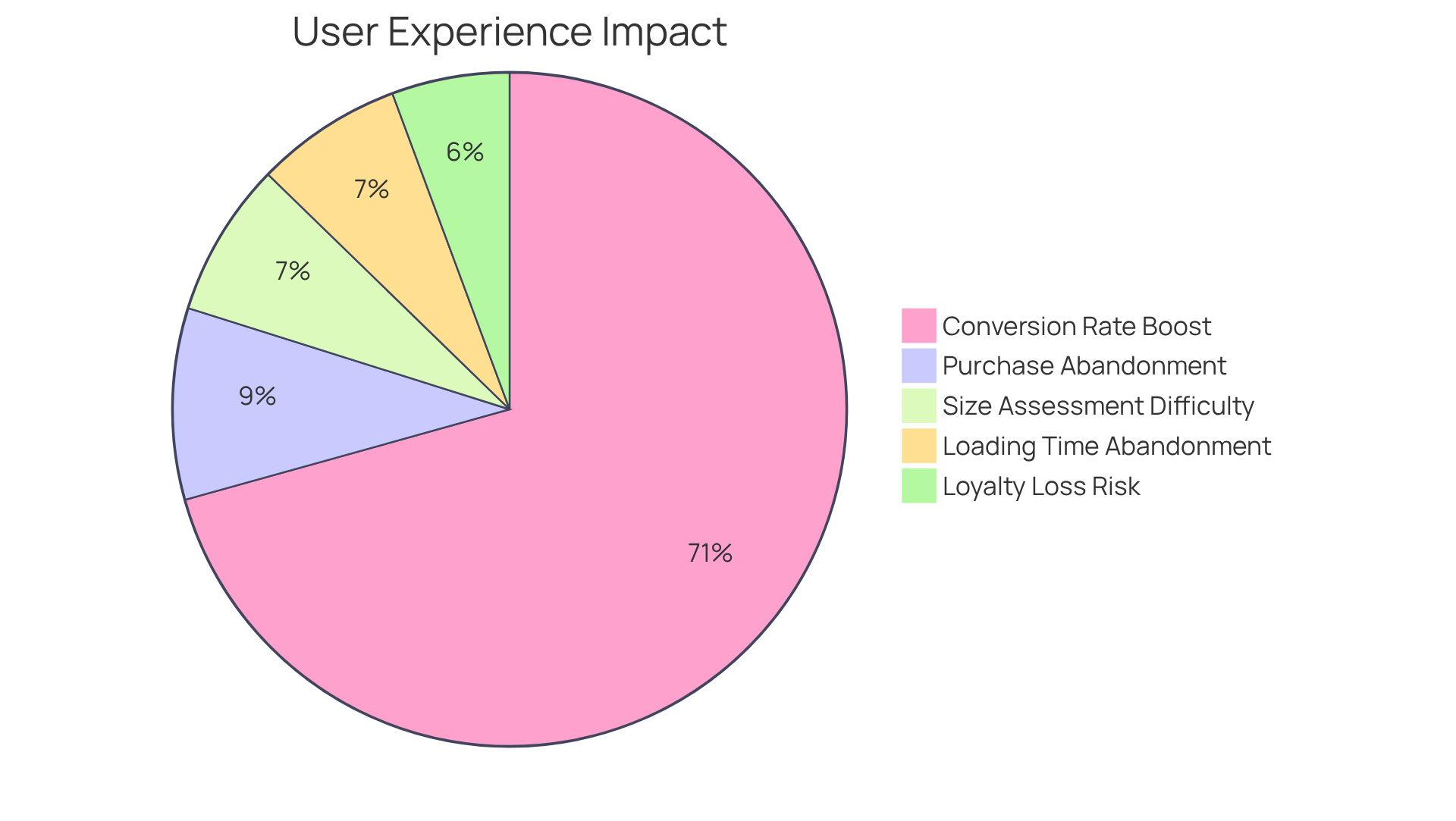
Customer Surveys: Gather Feedback to Inform UX Improvements
serve as a vital tool for DTC companies, enabling them to . By posing targeted questions, these companies unveil invaluable insights into , pain points, and . This feedback is crucial for , ensuring that websites meet audience expectations.
Regularly conducting surveys not only keeps companies attuned to their audience's evolving needs but also enhances the overall experience for individuals. Organizations that prioritize witness significant improvements in customer retention and satisfaction. By harnessing these insights, companies can implement to cultivate a seamless and intuitive online environment that encourages repeat visits and fosters .
Moreover, collaborating with can amplify these efforts. Their commitment to sustainable growth and profitability ensures that the insights gained from customer surveys are effectively transformed into actionable strategies that enhance client experiences and drive sales.
Ongoing A/B Testing: Validate Changes for Continuous Improvement
Continuous is indispensable for validating website modifications. It empowers brands to compare two versions of a webpage, determining which design or content yields . This iterative process fosters , enabling websites to adapt to evolving visitor behavior and preferences. A meticulously structured maximizes the effectiveness of and adheres to industry best practices. Brands prioritizing A/B testing have reported remarkable increases in success rates, with some achieving improvements of up to 400%. As Dan Siroker, a digital consultant, aptly noted, A/B testing is essential for making informed decisions that lead to ux optimization. By cultivating a culture of experimentation and integrating customer feedback, DTC companies can ensure their websites remain , ultimately and enhancing client satisfaction. 's holistic approach to underscores the necessity of aligning paid ads with landing pages, ensuring that A/B testing is woven into a comprehensive strategy that maximizes profitability. To implement A/B testing effectively, brands should commence with straightforward tests, such as modifying , to gauge audience response and refine their strategy. Additionally, incorporating feedback mechanisms will facilitate continuous improvement of the testing process, resulting in sustainable growth.
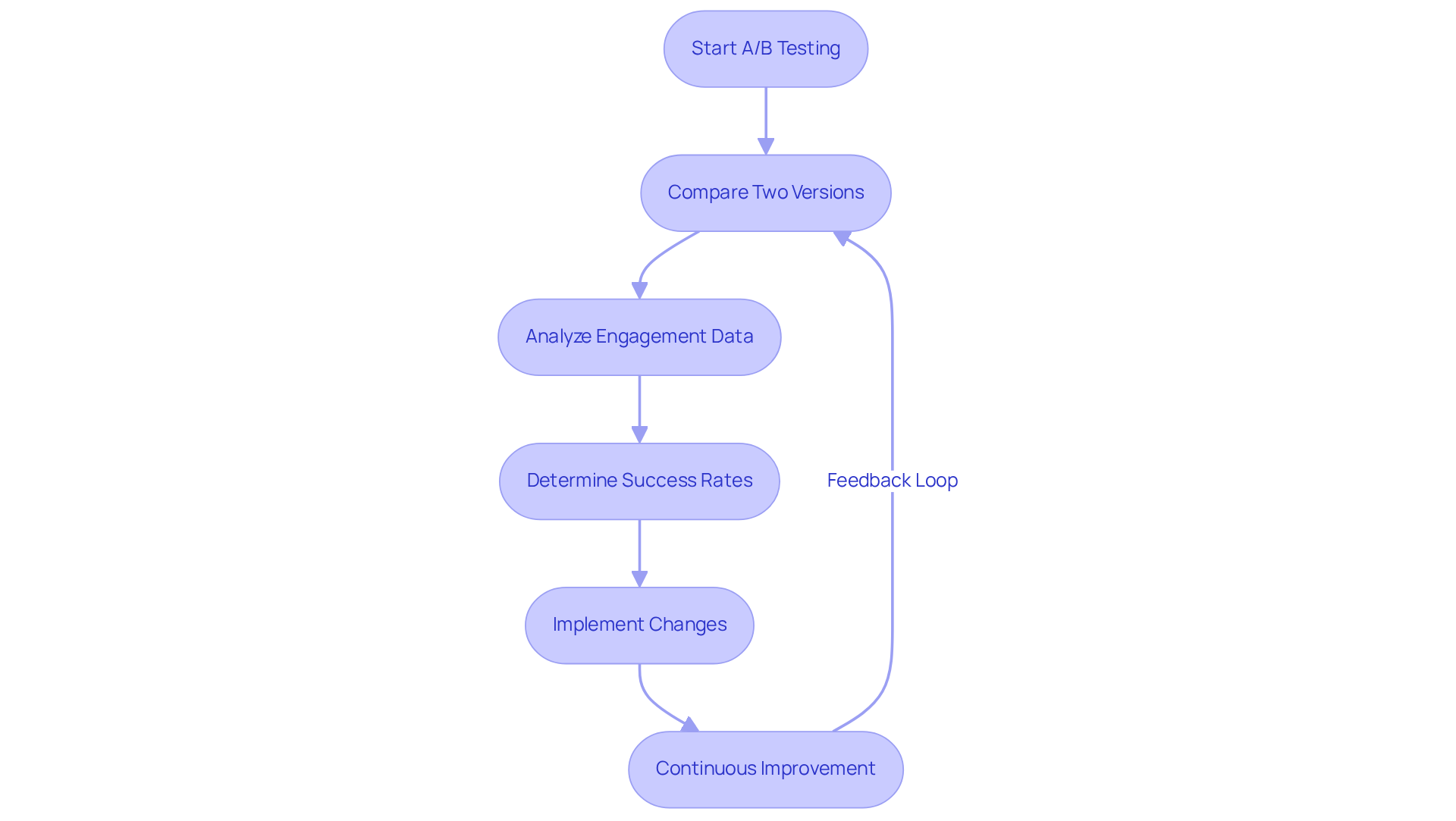
Dynamic Content Personalization: Tailor Experiences to Individual Users
Dynamic content personalization is the process of tailoring website interactions for individual users based on their behavior, preferences, and demographics. By delivering relevant content and product recommendations, businesses can create a more engaging experience that resonates with users.
For instance, a illustrates this point:
- The revamped their homepage to highlight social proof and customer reviews, thereby increasing credibility and trust, which resulted in a remarkable 35% boost in sales.
- Furthermore, a cleaning product label saw an impressive (AOV) by introducing , multi-packs, and gamifying the progress bar for free shipping thresholds.
These examples clearly demonstrate that such are crucial for , as they not only enhance but also significantly , positioning it as a vital strategy for DTC companies.
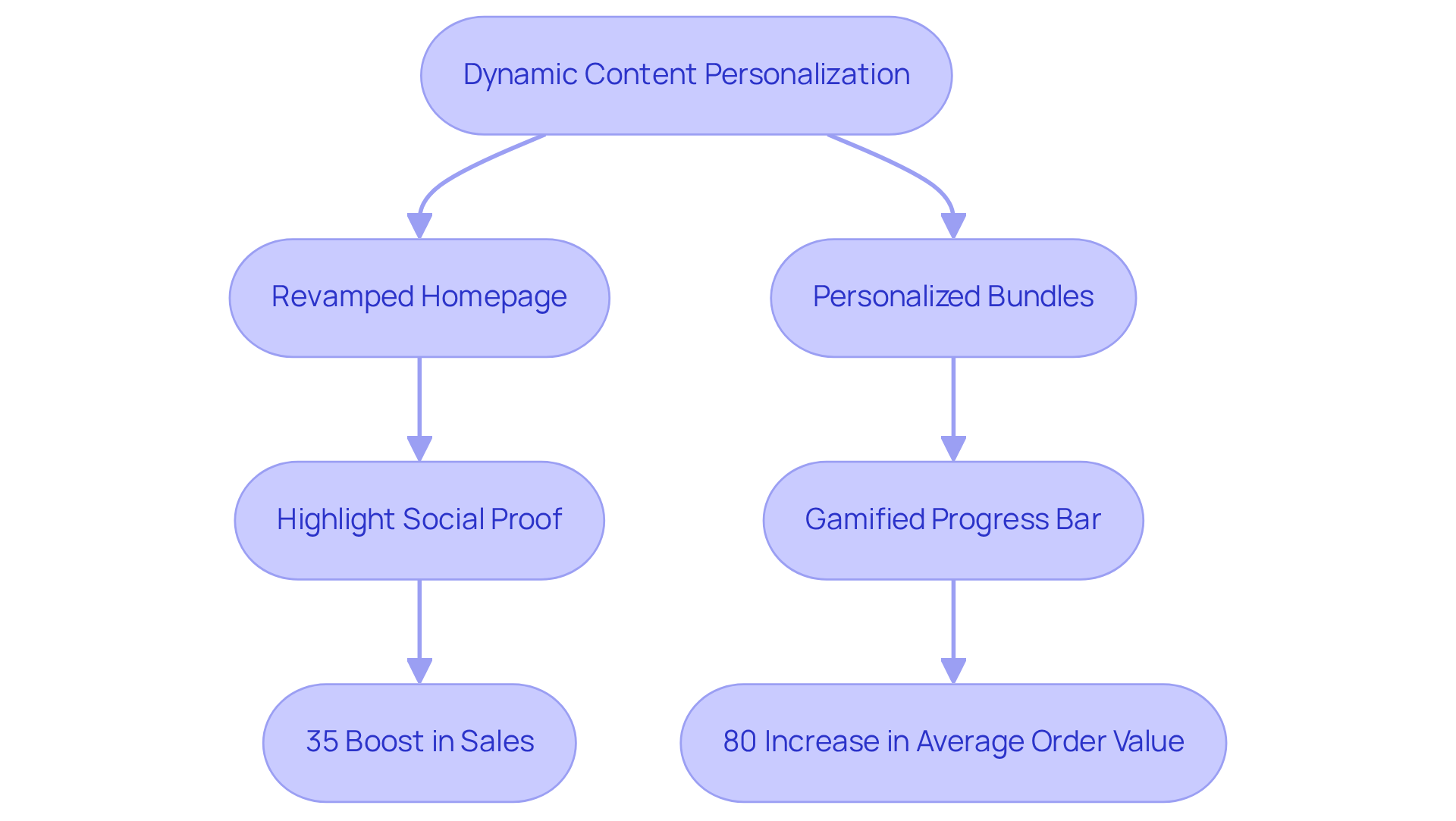
Simplifying User Journeys: Streamline Navigation for Better Conversions
and ensuring that guests can effortlessly locate what they need. By minimizing the number of clicks required to access critical pages and crafting an system, brands can significantly enhance the through .
, as it not only alleviates frustration but also encourages individuals to take desired actions, ultimately leading to increased . In fact, 94% of initial impressions hinge on website design, underscoring the vital role that navigation plays in shaping perceptions.
UX specialists assert that , through clear navigation frameworks, is essential for accommodating individuals with cognitive differences, thereby broadening the potential audience. Adopting , such as:
- Employing descriptive labels for categories
- Ensuring headers are clickable
can further enhance usability. As industry leaders have noted, investing in user-friendly navigation through UX optimization can yield . By prioritizing intuitive navigation, can cultivate trust and bolster customer loyalty, paving the way for sustained growth.

Measuring User Engagement Metrics: Track Performance for Informed Decisions
Measuring is paramount for comprehending how individuals interact with a website. Key metrics such as session duration, bounce rate, and provide critical insights into . By consistently tracking these metrics, brands can pinpoint and implement that enhance .
asserts that a continuous program facilitates these data-driven decisions, significantly contributing to and boosting profitability. This ongoing analysis is vital for , as it optimizes conversion rates and ensures long-term success through a comprehensive approach that maximizes existing resources via rigorous testing.
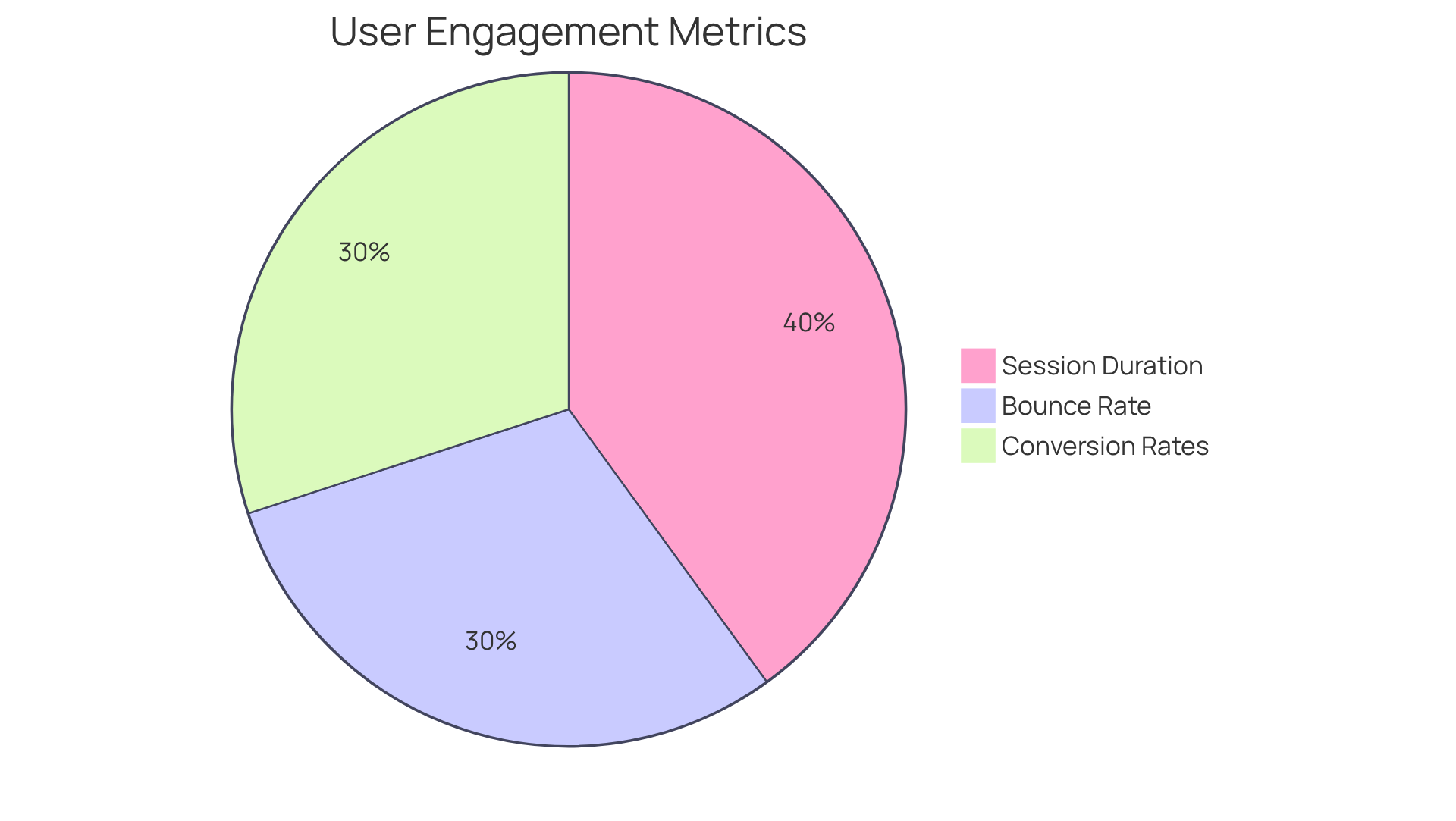
Conclusion
DTC brands can achieve remarkable success by prioritizing UX optimization, a cornerstone for enhancing customer engagement and driving profitability. By implementing comprehensive strategies tailored to user needs, brands create seamless experiences that not only attract visitors but also convert them into loyal customers.
The article outlines ten essential techniques that contribute to effective UX optimization, including:
- User session recordings
- Competitor analysis
- Persuasive copywriting
- Ongoing A/B testing
Each of these strategies plays a crucial role in understanding user behavior, refining messaging, and creating intuitive interfaces that resonate with customers. By consistently measuring user engagement metrics and adapting to feedback, brands foster a user-centric approach that leads to sustained growth and improved conversion rates.
Ultimately, embracing these UX optimization techniques transcends merely enhancing a website's appearance; it is about cultivating meaningful connections with consumers. DTC brands are encouraged to take actionable steps toward optimizing their user experience, ensuring competitiveness in an ever-evolving marketplace. Investing in UX is an investment in long-term success, reinforcing the idea that a well-designed experience can significantly impact both customer satisfaction and brand loyalty.
Frequently Asked Questions
What services does Parah Group offer for DTC brands?
Parah Group offers a comprehensive suite of services for DTC brands that includes user session recordings, competitor analysis, persuasive copywriting, UI/UX design, customer surveys, and ongoing A/B testing.
How can Parah Group's services benefit DTC brands?
By leveraging Parah Group's services, DTC brands can enhance their profitability and revenue without incurring additional advertising costs, leading to measurable improvements in ROI and customer engagement.
Why is effective UX design important for businesses?
Effective UX design goes beyond aesthetics; it directly impacts profitability and customer loyalty. Businesses that prioritize UX enhancement can achieve conversion increases of up to 30%, demonstrating its critical role in driving sales growth.
What is the purpose of user session recordings?
User session recordings allow companies to monitor real-time interactions on their websites, providing insights into visitor behavior. Analyzing these recordings helps identify challenges, areas of interest, and points where visitors abandon their carts, informing UX optimization decisions.
How does competitor analysis help DTC companies?
Competitor analysis enables DTC companies to benchmark their UX optimization against industry leaders, uncovering strengths and weaknesses that reveal opportunities for enhancement. This analysis can lead to improved user engagement and sales growth.
Can you provide examples of companies that benefited from UX optimization?
Yes, a $30M clothing label that worked with Parah Group saw a 35% rise in sales after refining product pricing and gamifying the shopping experience. Similarly, Grab Green, a $15M cleaning product company, increased their average order value by 80% through targeted adjustments like implementing free shipping thresholds.
What impact can effective UI and UX have on results?
Research indicates that effective UI can enhance results by up to 200%, while robust UX can elevate results by as much as 400%, emphasizing the importance of adopting best practices in UX optimization.
Why is ongoing competitor analysis crucial for DTC brands?
Ongoing competitor analysis is crucial because 88% of individuals are less likely to return to a site after encountering poor UX. Regularly benchmarking against competitors helps DTC brands continually improve their customer experience and maintain competitiveness in the market.
FAQs











